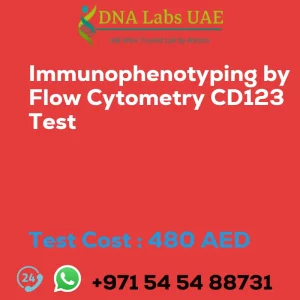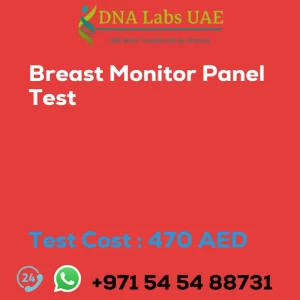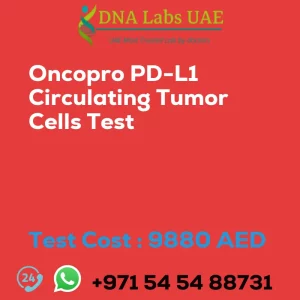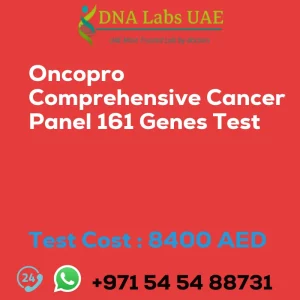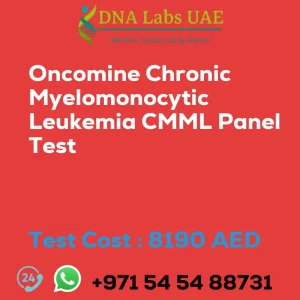IMMUNOPHENOTYPING BY FLOW CYTOMETRY CD33 Test
Test Name: IMMUNOPHENOTYPING BY FLOW CYTOMETRY CD33 Test
Components: CD33 Test
Price: 480.0 AED
Sample Condition: 3 mL (2 mL min.) whole blood in 1 Lavender Top (EDTA) tube AND 3 mL (2 mL min.) whole blood in 1 Green Top (Sodium Heparin) tube OR 2 mL (1 mL min.) Bone marrow in 1 Green Top (Sodium heparin) tube. Ship immediately at 18-22°C. DO NOT REFRIGERATE OR FREEZE. Specify time, date, and clinical details on the test request form.
Report Delivery: Sample Daily by 9 am; Report Same day
Method: Flow Cytometry
Test Type: Cancer
Doctor: Oncologist, Hematologist
Test Department: FLOW CYTOMETRY
Pre Test Information: Give brief clinical history.
Test Details:
The CD33 test is a flow cytometry-based immunophenotyping assay that is used to detect the presence and quantity of CD33 antigen on the surface of cells. CD33 is a transmembrane glycoprotein that is primarily expressed on myeloid cells, including granulocytes, monocytes, and dendritic cells. It is also found on the surface of leukemic blasts in acute myeloid leukemia (AML).
The CD33 test is commonly used in the diagnosis and monitoring of AML. By analyzing the expression of CD33 on leukemic blasts, clinicians can determine the subtype of AML and guide treatment decisions. In addition, the CD33 test can also be used to monitor minimal residual disease (MRD) after treatment to assess treatment response and disease progression.
The test involves the labeling of cells with fluorescently-labeled antibodies specific for CD33. The labeled cells are then analyzed using flow cytometry, which measures the fluorescence intensity of each cell. By comparing the fluorescence intensity of the labeled cells to a control sample, the percentage of cells expressing CD33 can be determined.
Overall, the CD33 test is a valuable tool in the diagnosis and monitoring of AML, providing important information about the presence and quantity of CD33 antigen on leukemic cells.
| Test Name | IMMUNOPHENOTYPING BY FLOW CYTOMETRY CD33 Test |
|---|---|
| Components | |
| Price | 480.0 AED |
| Sample Condition | 3 mL (2 mL min.) whole blood in 1 Lavender Top (EDTA) tubeAND 3 mL (2 mL min.) whole blood in 1 Green Top (Sodium Heparin) tube OR 2 mL (1 mL min.) Bone marrow in 1 Green Top (Sodium heparin) tube. Ship immediately at 18\u0192??22?\u00f8C. DO NOT REFRIGERATE OR FREEZE. Specify time, date and clinical details on test request form. |
| Report Delivery | Sample Daily by 9 am;Report Same day |
| Method | Flow Cytometry |
| Test type | Cancer |
| Doctor | Oncologist, Hematologist |
| Test Department: | FLOW CYTOMETRY |
| Pre Test Information | Give brief clinical history. |
| Test Details |
The CD33 test is a flow cytometry-based immunophenotyping assay that is used to detect the presence and quantity of CD33 antigen on the surface of cells. CD33 is a transmembrane glycoprotein that is primarily expressed on myeloid cells, including granulocytes, monocytes, and dendritic cells. It is also found on the surface of leukemic blasts in acute myeloid leukemia (AML). The CD33 test is commonly used in the diagnosis and monitoring of AML. By analyzing the expression of CD33 on leukemic blasts, clinicians can determine the subtype of AML and guide treatment decisions. In addition, the CD33 test can also be used to monitor minimal residual disease (MRD) after treatment to assess treatment response and disease progression. The test involves the labeling of cells with fluorescently-labeled antibodies specific for CD33. The labeled cells are then analyzed using flow cytometry, which measures the fluorescence intensity of each cell. By comparing the fluorescence intensity of the labeled cells to a control sample, the percentage of cells expressing CD33 can be determined. Overall, the CD33 test is a valuable tool in the diagnosis and monitoring of AML, providing important information about the presence and quantity of CD33 antigen on leukemic cells. |


